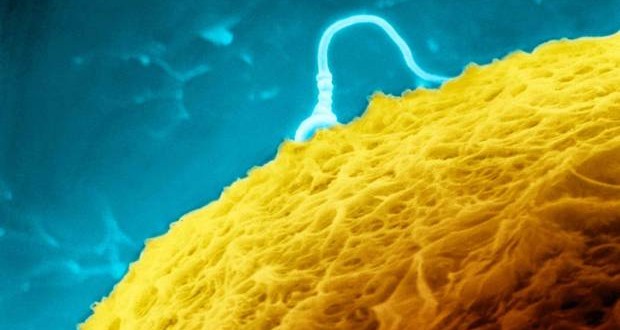Researchers have claimed to have grown mature human sperm in test tubes in a breakthrough that could help combat male infertility.
According to the Associated Press, the biotech startup Kallistem had announced their discovery previously, but obtained a patent for their process after they and CNRS laboratory workers detailed how it worked for the first time at a Thursday press conference. Officials at CNRS confirmed the success of their research in a September 17 press release.
To pull off the feat, the scientists developed sperm from spermatogonial cells, immature cells that are present in all males, including pre-pubescent boys, the AP said. Ordinarily, these cells develop into sperm cells at the start of puberty. They used chitosan, a substance present in the cell walls of fungi, to design a bioreactor which make in-vitro sperm generation possible.
The team had been trying for 15 years to produce male reproductive cells outside of the body, finally succeeding at the end of 2014. In June 2015, they published a patent for what they are calling the “Artistem” system. The next step, the AP said, is for the technology to be clinically tested – a process which is always difficult when it comes to reproductive aids.
Men likely to welcome this new infertility treatment
“This breakthrough opens the way for therapeutic avenues that have been eagerly awaited by clinicians for many years,” the CNRS said. “No treatment is currently available to preserve the fertility of young, prepubertal boys undergoing gonadotoxic treatments, such as certain types of chemotherapy. Yet more than 15,000 young cancer patients are affected throughout the world.”
“Nor is there any solution for the 120,000 adult men who suffer from infertility that cannot be treated using existing technologies… Through the Artistem technique, Kallistem hopes to meet the needs of these two patient groups,” they added. The research was conducted by Kallistem’s scientific director Philippe Durand and CNRS researcher Marie-Hélène Perrard.
Durand told the AP that the interior of the testicle is the origin of most male fertility issues, so he and his colleagues first attempted to replicate the male gonad in the lab. Using their bioreactor, the researchers reproduced the conditions found within the human body, then started by using rat cells (then monkey cells, and finally human one) to recreate the sperm development process.
According to statistics attributed to the Mayo Clinic, up to 15 percent of couples are infertile. Men and women each account for approximately 30 percent of all infertility cases, they said, while a combination of factors are responsible for the other 40 percent.
“As a culture we presume that when a couple is infertile it’s a woman’s problem,” Liberty Barnes, a research associate at the University of Cambridge and the author of a book on male infertility who was not associated with the French research, told the AP. “Infertile men are disappointed that there aren’t more options for them,” but this new breakthrough could change that.
Agencies/Canadajournal
 Canada Journal – News of the World Articles and videos to bring you the biggest Canadian news stories from across the country every day
Canada Journal – News of the World Articles and videos to bring you the biggest Canadian news stories from across the country every day



